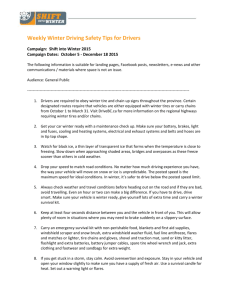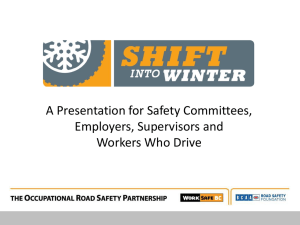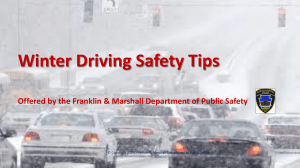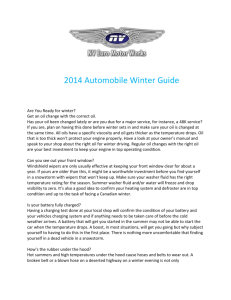Occupational Road Safety Partnership
advertisement
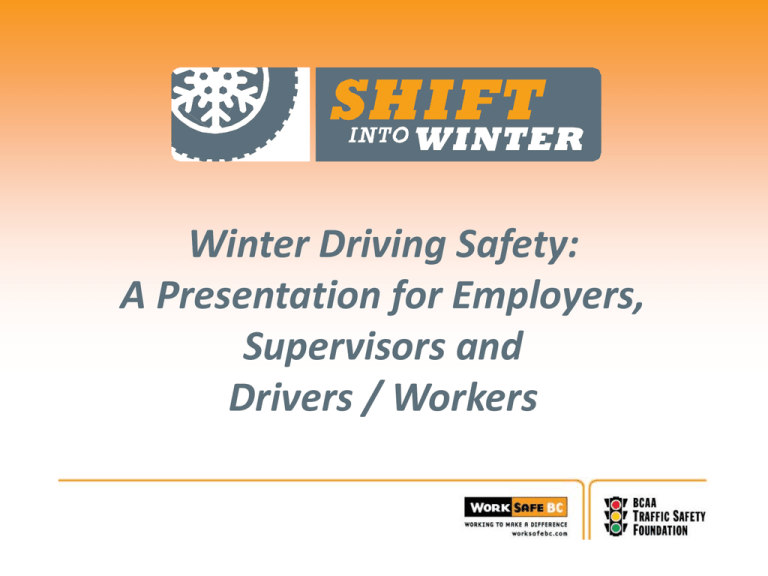
Winter Driving Safety: A Presentation for Employers, Supervisors and Drivers / Workers Driving in winter Background information • Vehicle collisions are a leading cause of work-related deaths • Vehicle collision rates in B.C. significantly increase between October and December • Winter roads in can be challenging even for experienced drivers • B.C. winter driving season: October 1st - April 30th 2 Everyone is responsible for safety Motor vehicles are workplaces • Make sure you know your health and safety responsibilities, including: - Employers: establish, deliver and maintain an OHS program that addresses driving risks - Supervisors: instruct drivers in safe work procedures - Drivers: be safe on the roads; follow all laws and workplace safety rules; report unsafe conditions 3 Shift into Winter Prepare your vehicle • Make sure it is up to the challenge of winter weather Prepare yourself • Driving in winter puts you at greater risk of being in a crash Drive for the conditions • Thinking about it now could save you from problems later 4 Prepare your vehicle / company vehicles • Install four matched winter tires (look for the mountain and snowflake logo) • Get a tune-up • Install new winter-wiper blades • Clear snow from all vehicle surfaces • Carry a charged cell phone • Keep the gas tank topped up • Pack a winter survival kit 5 Prepare your vehicle: tire chains • Use chains if you do not have winter tires • Safely install chains before reaching an uphill grade. • Look for signage for directions on chains • A set of four studded tires can be used throughout the winter season 6 Prepare yourself • Learn winter driving skills • Check road / weather conditions • Plan route ahead of time • Leave lots of time • Be alert, rested and wear comfortable clothing • Take someone with you • Follow working alone procedures where applicable • Don’t panic if you get stranded 7 Drive for the conditions • Before driving, consider ways in which to eliminate/ reduce /manage road risk • Determine if winter travel is absolutely necessary • Explore alternatives to travel (phone, e-mail, tele/ video-conferencing, public transportation) 8 Drive for the conditions • Drop speed to match conditions • Maintain a safe following distance • Watch for black ice • Accelerate and brake slowly • Know how to handle a skid • Don’t use cruise control • Be cautious around other vehicles 9 Checklist 10 Tip sheets Three tips sheets are available at worksafebc.com 11 Review • Vehicle collisions increase during winter • Manage road risk at the workplace • Prepare your vehicle (or fleet) • Prepare yourself (or your drivers) • Take changing conditions into account when planning a work trip • Slow down and drive for the conditions 12 For more information www.worksafebc.com www.drivebc.ca www.weatheroffice.gc.ca www.icbc.com www.tc.gc.ca www.bcaatsf.ca Questions?
